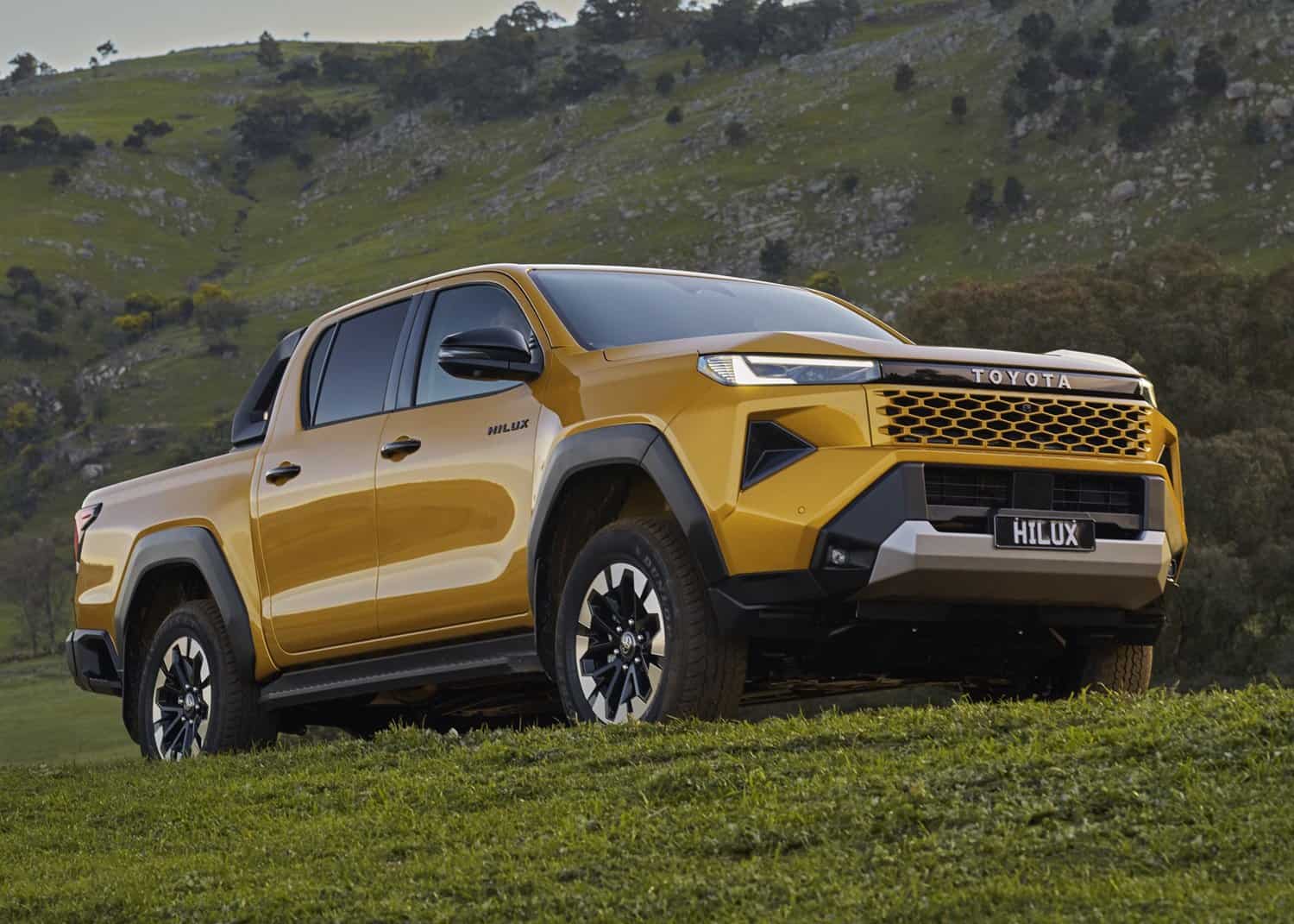
Spied at the beginning of the year undergoing testing, and more recently, teased in a single image, Toyota has finally revealed the heavily updated Hilux in Thailand in both diesel and electric guises.
Known in said market as the Hilux Travo, the replacement for the Hilux Revo continues to ride on the same IMV platform, albeit heavily updated and, as previously reported, in a choice of single and double cab bodystyles – the Xtra Cab having been discontinued.
Compared to the current AN110 Hilux, which has been on-sale since 2015, the new generation retains the same 1 815 mm height, 1 900 mm width and 3 085 mm long wheelbase, but with surprise five millimetre overall length reduction to 5 325 mm.
As before, the claimed ground is 225 mm and the rated towing capacity for a braked trailer 3 500 kg.
Despite the retention of the IMV rather than switching to the newer TNGA-F, Toyota has, however, retuned the Hilux’s suspension and shock absorbers, while also equipping it with electric power steering for the first time.
Up front, and as per previous reports, the Hilux dispenses with the 2.4 GD-6 turbodiesel and normally aspirated 2.0 and 2.7-litre petrol engines in favour of now being solely motivated by the 2.8 GD-6.
Unsurprisingly, no revisions have taken place, meaning the same 150kW/500Nm outputs as before, or 165kW/550Nm in the case of the GR Sport.
Also retained is the 48-volt mild-hybrid system on certain derivatives, the six-speed manual gearbox and, contraire to certain claims hinting at the Hilux getting the eight-speed automatic from the Land Cruiser Prado, the continuation of the six-speed automatic.
The electric version meanwhile uses a 59.4-kWh battery pack that powers an electric motor on each axle. The reported output is 144 kW and the claimed range 315 km.
Sales of the EV are only expected in early 2026, followed by a fuel-cell EV in 2028.
Stylistically, the Hilux adopts a sharper aesthetic with elements of the Corolla Cross present, as well as the Tacoma.
A design language dubbed Cyber Sumo, the side profile has is unchanged from the AN 110, however, the slightly thinner looking loadbox takes after the JAC T8 and, as also previously alluded to, the Volkswagen Amarok.
The biggest change is to be found inside where the leaking of patent drawing have proved accurate.
As such, the Hilux gets the same interior as Land Cruiser Prado, namely the steering wheel with physical buttons, flat centre console, rectangular air vents, two-piece dashboard and, on flagship models, a pair of 12.3-inch displays for the instrument cluster and infotainment system.
A departure though is the gear lever which, on automatic models, has been lifted from certain Lexus models rather than the Prado or even the Tacoma.
While final specification is expected to vary depending on trim level, four-wheel drive models keep not only the locking rear differential, but receive an enhanced Multi-Terrain Select system with six modes; Auto, Dirt, Sand, Mud, Snow and Rock – the latter only available with the low range transfer case switched to 4L.
Officially called the ninth generation instead of an updated eighth, the new Hilux is expected to go on-sale in South Africa next as the run-out of the AN 110 commenced with the arrival of the Legend 55 two months ago.
Although a formal announcement by Toyota South Africa Motors hasn’t been made, expect a first glance at the brand’s annual State of the Motor Industry conference next year before the commencing of production at the Prospecton Plant in Durban soon after.



